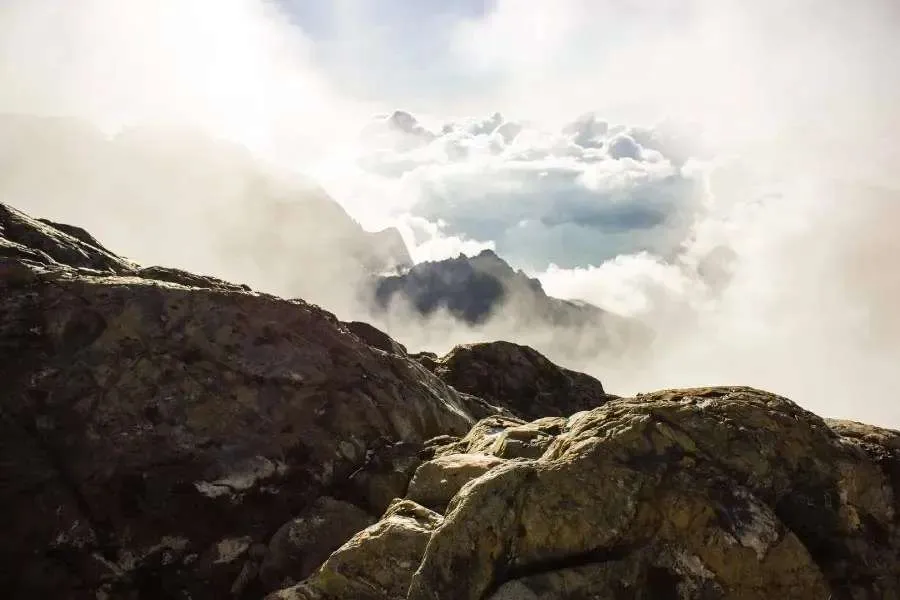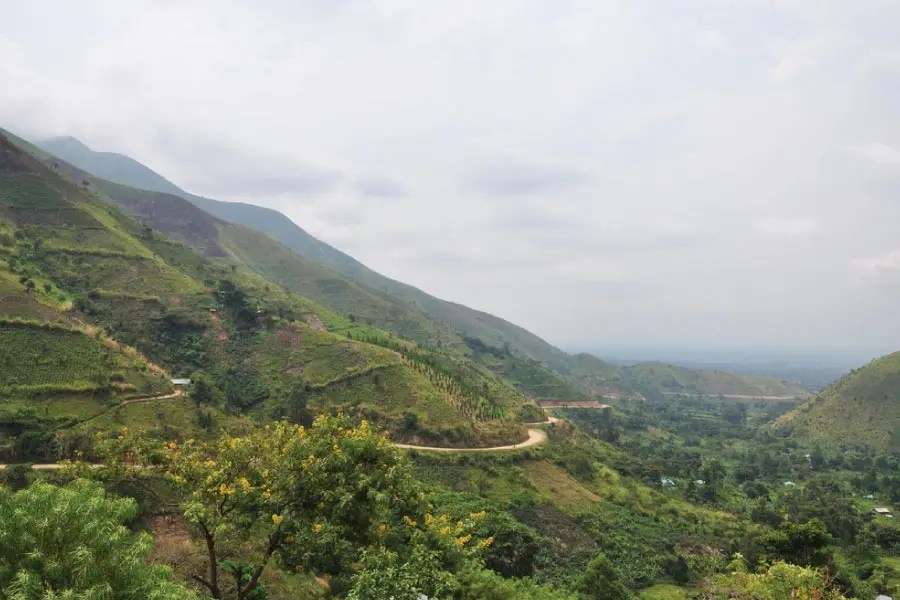Rwenzori Mountains National Park is a 996-square-kilometer park situated along the border between Uganda and the Democratic Republic of the Congo. This UNESCO World Heritage Site is home to the Rwenzori Mountains, also known as the “Mountains of the Moon” whose snow-capped peaks and lush valleys create a stunning backdrop for an unforgettable adventure.
Rwenzori Mountains National Park is known for its distinctive flora rather than its fauna. The park’s diverse ecosystems range from montane forests to alpine meadows which support a delicate balance of life. The Bujuku Valley, one of the park’s highlights, is a mesmerizing expanse of alpine meadows surrounded by towering peaks.
There are more than 20 lakes in the park and several rivers and streams which originate from the mountain that support wildlife in the flood plains. Rwenzori National Park is a biodiversity hotspot, hosting a variety of wildlife adapted to its unique habitats. The park is home to 70 species of mammal, including elephants, Rwenzori red duikers, Rwenzori otters, colobus monkeys, blue monkeys, and unusual reptiles such as the three-horned chameleon.
The park is also home to 217 bird species including several Albertine Rift endemics. Among these are 17 species that are endemic to the park making Rwenzori an important birding area (IBA).

The crown jewel of Rwenzori National Park is undoubtedly the Margherita Peak, the third-highest peak in Africa. Climbing this snow-capped wonder is a challenging but immensely rewarding experience.
Going through diverse ecosystems, including lush rainforests, alpine meadows, and glacial zones, the climb offers a unique opportunity to see a variety of flora and fauna while enjoying panoramic views of the surrounding landscapes.
The different ecosystems in Rwenzori National Park support over 200 species of birds, including Albertine rift endemics, making it a paradise for birdwatchers.
Birding opportunities are greatest in the montane forest; understandably, few species choose to make their home in the inhospitable world of the high Rwenzori.
Species to watch out for include the Rwenzori Turaco and Long-eared Owl; while higher up on the slopes, Bearded Vultures, Swifts, and Black Eagles may be seen circling for prey. Bee-eaters, Robins, Sunbirds, and Barbets can also be spotted in the park.
Bring your binoculars and camera for an immersive birding experience in this park.
Walk with Bakonzo villagers through their homesteads in the foothills of the Rwenzori ranges as they demonstrate their daily activities, from tending to their animals and crops to preparing meals with the freshest ingredients.
You may also witness vibrant dances, taste local cuisine, and purchase handmade crafts as souvenirs.
Beyond the summit trek, Rwenzori National Park offers a network of hiking trails suitable for various skill levels. Explore the lower elevations with guided hikes and nature walks through the montane forests.
Hiking provides a more leisurely way to appreciate the park’s natural wonders offering glimpses of colorful butterflies, various monkey species, and the melodious songs of birds.

The best time to visit Rwenzori National Park is during the dry seasons, from June to August and December to February. During these months, the weather is relatively stable, and trekking conditions are optimal.
However, the park’s lush beauty can be appreciated year-round, so you should plan your trip based on personal preferences and interests.
The nearest major town to Rwenzori National Park is Kasese, which is accessible by road from Uganda’s capital, Kampala. It is located approximately 380 km from Kampala.
By road: Driving from Kampala to the Rwenzori Mountains National Park takes around 5 hours via Fort Portal. The alternative route through Masaka and Mbarara takes a bit longer and you will reach Kasese in about 6 hours.
By air: Domestic flights are available from Entebbe International Airport to Kasese Airstrip. Flights can also be arranged from other national parks like Kidepo, Murchison Falls, and Kisoro. From Kasese, it is a short drive to the park’s entrance.
Rwenzori Mountains National Park is one of the lesser-visited parks in Uganda. This is due to it being a very tough mountain to climb, even tougher than climbing Mount Kilimanjaro.
At the lower slopes where the mountain trails begin, there are several accommodation options but the options run out as you climb and the only options become the various huts up the mountains.
Accommodation options around Rwenzori National Park, on the other hand, cater to various budgets and preferences. From cozy lodges to more luxurious options, visitors can find a range of choices. Popular areas to consider for accommodation include Kasese and the nearby town of Kilembe, which serves as the gateway to the park.
Here are some of our safari packages that include a visit to Rwenzori National Park for mountain climbing, birding, as well as other activities.
Take a look through one or two of these packages so that you can get a good idea of what a visit to Rwenzori National Park would feel like. Remember that regardless of your specific needs, all our safari packages can be personalized for you.
Mt. Rwenzori Park Entry Fees
| Category | Foreign (Non-residents) USD. | Foreign (Residents) Usd. | Rest Of Africa Usd. | East African citizens (Ug.shs) |
| Adult | 35 | 25 | 20 | 15,000 |
| Child | 5 | 5 | 5 | 2,500 |
| Boat (shoebill view) | 100 | 100 | 100 | 100,00 |
| Nature Walk | 40 | 40 | 40 | 30,000 |
| Night game drive | ||||
| Cycling |
